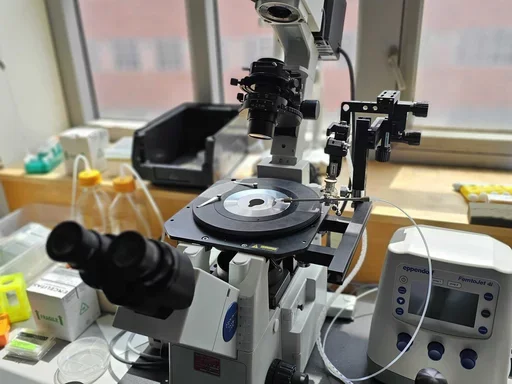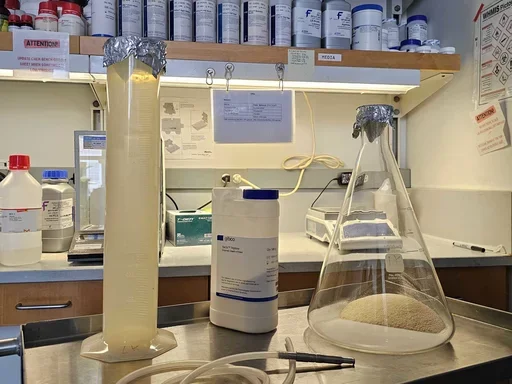Research
Genetic Basis of Phenotypic Variation

My lab is interested in the genetic basis of heritable traits. The genetic basis of most traits is complex, involving many genes that interact with each other and the environment. My lab conducts experiments in model organisms (the yeast Saccharomyces cerevisiae and the nematode worm Caenorhabditis elegans), as well as computational analyses, aimed at understanding how changes at the level of DNA are shaped by molecular and evolutionary forces, and how these changes lead to all the observable differences among individuals within a species.
Genetics of global gene expression in S. cerevisiae
Genetic background affects expression of a substantial fraction of all genes. We have carried out extensive analysis of genome-wide expression levels in a cross between two diverse yeast strains. We were able to link expression levels of thousands of genes to genetic markers, and to show that expression of most genes is genetically complex, with multiple loci involved in determining expression levels. We also found large groups of genes of related function, with expression levels of all members of a group linking to the same locus, and identified specific polymorphisms responsible for these expression differences. We developed new statistical methods to search for naturally occurring genetic interactions underlying gene expression, and identified such interactions for many transcripts. Ongoing research projects include: investigating the interactions between genes and environment in control of cell growth and gene expression; studying the genetics of sensitivity and resistance to drugs and other chemical compounds; understanding the genetic basis of variation in protein levels; and investigating strain-specific phenotypic effects of prion-like elements in yeast.
Technology development and yeast population genetics

One of the central challenges of genomics is to be able to detect, simply and cheaply, all differences in sequence among the genomes of individual members of a species. We devised a system that detects ~90% of all single-nucleotide differences in yeast genomes and maps them to within a few nucleotides on a reference sequence. This system makes it possible to find a variety of single spontaneous mutations in different genes, gene-size insertions and deletions, and most single-nucleotide polymorphisms between diverse yeast strains. We are using this system to characterize the genomic diversity of a large collection of yeast strains sampled from all over the world and from different ecological niches. We plan to extend these studies to connect sequence variation across the species with variation in gene expression, ecological niche, and other phenotypes. Relatively little is known about the natural lifestyle and population genetics of yeast. One major question is whether genetically diverse yeast strains mate and recombine in the wild. We developed a method to infer the evolutionary history of a species from genome sequences of multiple individuals and applied it to whole-genome sequence data from three strains of S. cerevisiae and the sister species S. paradoxus. We estimated that although any two strains have undergone approximately 16 million cell divisions since their last common ancestor, only 314 outcrossing events have occurred during this time (roughly one every 50,000 divisions). These results provide the initial foundation for population studies of association between genotype and phenotype in S. cerevisiae.
Complex trait genetics in C. elegans

We have built a set of over 200 advanced intercross inbred lines from a cross between the Bristol and Hawaiian isolates. We densely genotyped these lines to delineate the contributions of each parental genome to each line. The lines are being phenotyped for gene expression as well as morphological, developmental, and behavioral traits, allowing us to investigate the genetic basis of variation in these traits. We have also noted a region of the genome that was subject to selection during line construction, and shown that this is due to an incompatibility between the parental isolate alleles at two loci. This appears to be an incipient speciation event between the isolates. We are pursuing an investigation into the molecular nature of this effect. In addition to the inbred lines, we have genotyped a large collection of wild C. elegans isolates, which allows us to investigate worm population genetics and determine the evolutionary history of polymorphisms with phenotypic effects.